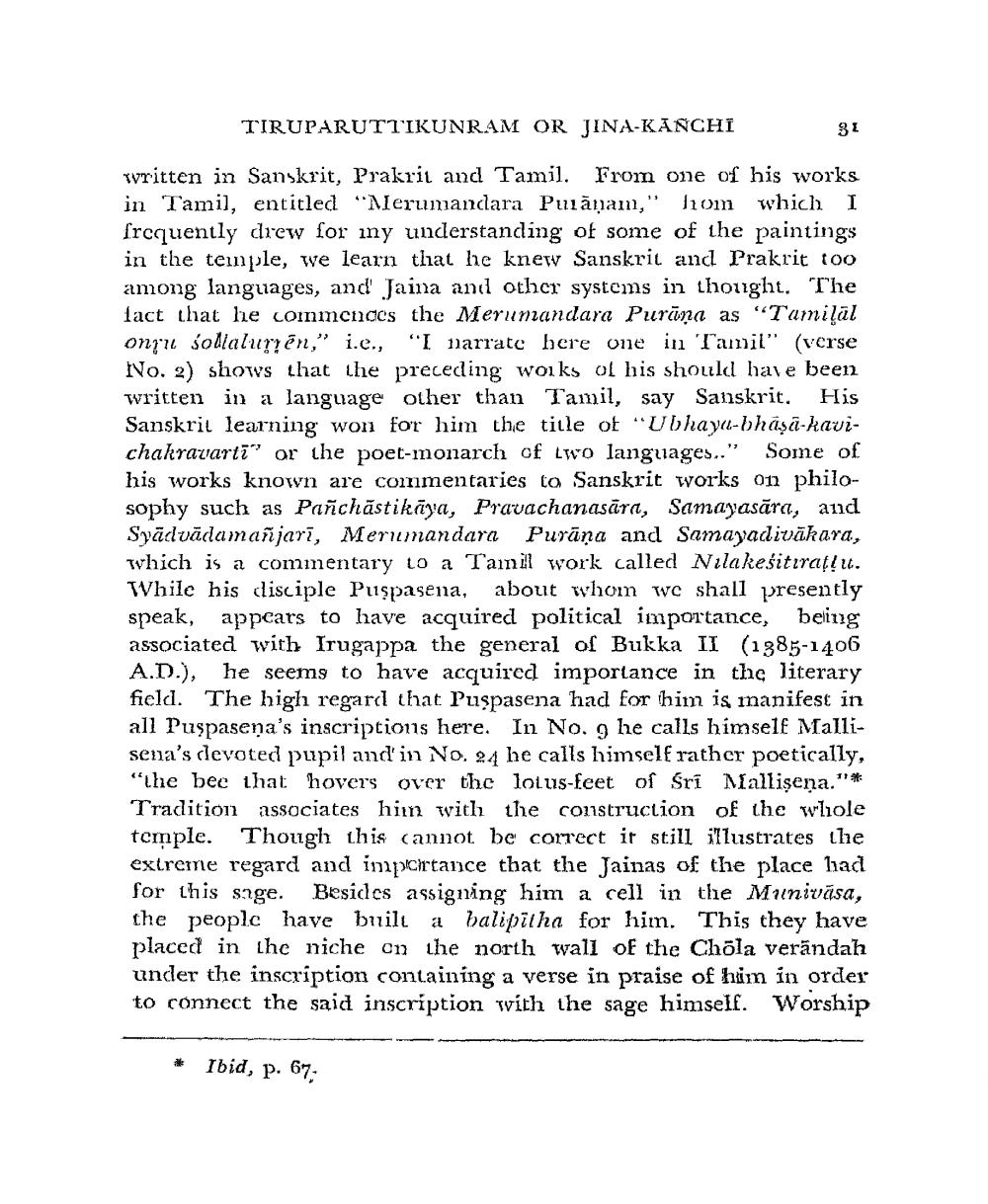________________
TIRUPARUTTIKUNRAM OR JINA-KANCHI
32
written in Sanskrit, Prakril and Tamil. From one of his works in Tamil, entitled "Merumandara Purānam," hrom which I frcquently drew for iny understanding of some of the paintings in the temple, we learn that he knew Sanskrit and Prakrit too among languages, and Jaina and other systems in thought. The fact that he commences the Meruniandara Purana as "Tamilāl onzil sollaluryen," i.e., "I narrate here one in Tamil" (verse No. 2) shows that the preceding works of his should have been written in a language other than Tamil, say Sanskrit. His Sanskrit learning won for him the title of “Ubhaya-bhāṣā-kavichakravartī” or the poet-monarch of two languages.." Some of his works known are commentaries to Sanskrit works on philosophy such as Pañchāstikāya, Pravachanasāra, Samayasāra, and Syädvādamañjari, Merimandara Purāna and Samayadivākara, Thich is a commentary to a Tainill work called Nilakešitiraf! 1. TVhile his disciple Puspasena, about whom we shall presently speak, appears to have acquired political importance, being associated with Irugappa the general of Bukka II (1385-1406 A.D.), he seems to have acquired importance in the literary field. The high regard that Puspasena had for him is manifest in all Puspasena's inscriptions here. In No. 9 he calls himself Mallisena's clevoted pupil and' in No, 24 he calls himself rather poetically, "The bee that hovers over the lotus-feet of śrí Mallişena."* Tradition associates him with the construction of the whole temple. Though this cannot be correct it still illustrates the extreme regard and importance that the Jainas of the place liad for this sage. Besides assigning him a cell in the Munivása, the people have built a balipitha for him. This they have placed in the niche on the north wall of the Chola verāndah under the inscription containing a verse in praise of him in order to connect the said inscription with the sage himself. Worship
*
Ibid, p. 67;




